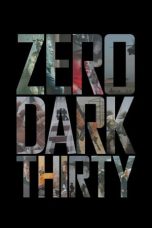- Source: September 1932 lunar eclipse
- Gerhana bulan September 1932
- Jupiter
- Astronomi
- Kalender Yunani Kuno
- September 1932 lunar eclipse
- March 1932 lunar eclipse
- September 1950 lunar eclipse
- September 1941 lunar eclipse
- September 1931 lunar eclipse
- Eclipse season
- September 1933 lunar eclipse
- Solar eclipse of August 31, 1932
- Eclipse
- Solar eclipse of September 21, 2025
The Moon (2023)
2001: A Space Odyssey (1968)
12 Strong (2018)
Zero Dark Thirty (2012)
No More Posts Available.
No more pages to load.
A partial lunar eclipse occurred at the Moon’s ascending node of orbit on Wednesday, September 14, 1932, with an umbral magnitude of 0.9752. A lunar eclipse occurs when the Moon moves into the Earth's shadow, causing the Moon to be darkened. A partial lunar eclipse occurs when one part of the Moon is in the Earth's umbra, while the other part is in the Earth's penumbra. Unlike a solar eclipse, which can only be viewed from a relatively small area of the world, a lunar eclipse may be viewed from anywhere on the night side of Earth. Occurring about 4.8 days before apogee (on September 19, 1932, at 17:00 UTC), the Moon's apparent diameter was smaller.
This was the last of the first set of partial lunar eclipses in Lunar Saros 136, preceding the first total eclipse on September 26, 1950.
Visibility
The eclipse was completely visible over much of Africa, Europe, and west, central, and south Asia, seen rising over west Africa, South America, and eastern North America and setting over east and northeast Asia and Australia.
Eclipse details
Shown below is a table displaying details about this particular solar eclipse. It describes various parameters pertaining to this eclipse.
Eclipse season
This eclipse is part of an eclipse season, a period, roughly every six months, when eclipses occur. Only two (or occasionally three) eclipse seasons occur each year, and each season lasts about 35 days and repeats just short of six months (173 days) later; thus two full eclipse seasons always occur each year. Either two or three eclipses happen each eclipse season. In the sequence below, each eclipse is separated by a fortnight.
Related eclipses
= Eclipses in 1932
=An annular solar eclipse on March 7.
A partial lunar eclipse on March 22.
A total solar eclipse on August 31.
A partial lunar eclipse on September 14.
= Metonic
=Preceded by: Lunar eclipse of November 27, 1928
Followed by: Lunar eclipse of July 4, 1936
= Tzolkinex
=Preceded by: Lunar eclipse of August 4, 1925
Followed by: Lunar eclipse of October 28, 1939
= Half-Saros
=Preceded by: Solar eclipse of September 10, 1923
Followed by: Solar eclipse of September 21, 1941
= Tritos
=Preceded by: Lunar eclipse of October 16, 1921
Followed by: Lunar eclipse of August 15, 1943
= Lunar Saros 136
=Preceded by: Lunar eclipse of September 4, 1914
Followed by: Lunar eclipse of September 26, 1950
= Inex
=Preceded by: Lunar eclipse of October 6, 1903
Followed by: Lunar eclipse of August 26, 1961
= Triad
=Preceded by: Lunar eclipse of November 14, 1845
Followed by: Lunar eclipse of July 16, 2019
= Lunar eclipses of 1930–1933
== Saros 136
=It was part of Saros series 136.
= Half-Saros cycle
=A lunar eclipse will be preceded and followed by solar eclipses by 9 years and 5.5 days (a half saros). This lunar eclipse is related to two total solar eclipses of Solar Saros 143.
See also
List of lunar eclipses and List of 21st-century lunar eclipses
External links
Saros series 136
1932 Sep 14 chart Eclipse Predictions by Fred Espenak, NASA/GSFC






